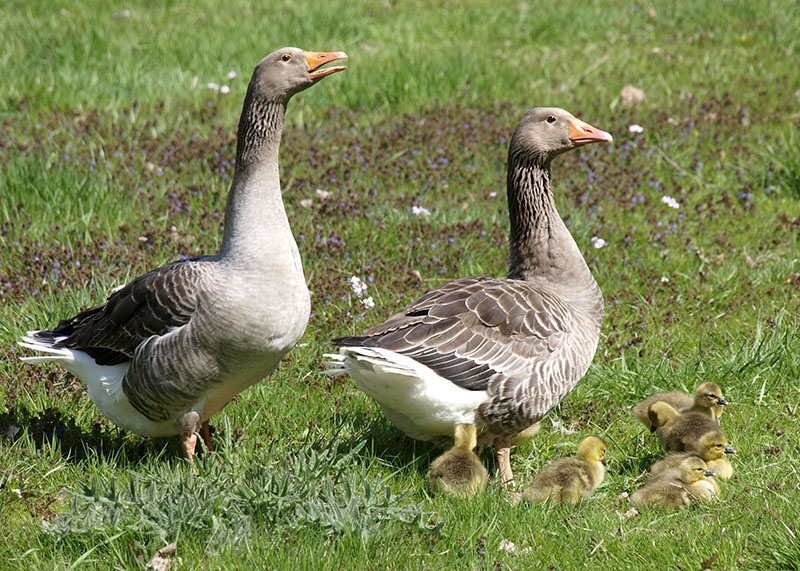Pomeranian Goose
The Pomeranian goose is a European breed, originating from Northern Germany, possibly as early as 1550.

Characteristics
These geese are a heavy set, medium sized meat breed. They weigh 15-17 lbs, and retain 13-15 of those pounds at market weight. Their eggs are white, and they produced 15-35 eggs annually. Ganders are able to service 3-4 geese.
Pomeranians are set apart from other European geese by their single-lobed paunch. Their heads are also slightly flat, their necks stout, protruding breasts, and overall rounded body. Some Pomeranians have a knob at the base of their bills, but this is a sign of crossbreeding.
The Pomeranian goose comes in four colors: solid white, solid gray, saddleback buff (pictured above), and saddleback gray. The saddlebacks only exist in North America, and are noted for their head, back, and flanks being colored buff or gray. The rest of a saddleback will be solid white.
Historically, the solid gray geese have been most popular, but by the late 20th century, the saddleback (both buff and gray) became the more popular color.
Bills should be pinkish red, with reddish orange legs and feet, and blue eyes.
Their temperament is varied, some being docile and others aggressive, but overall they tend to greet people with noise, so they have a place as watch birds.
References
The Livestock Conservancy PO Box 477, 33 Hillsboro St, Pittsboro, NC 27312
